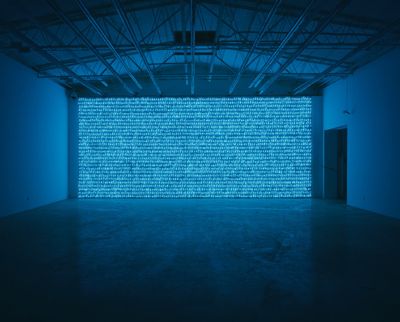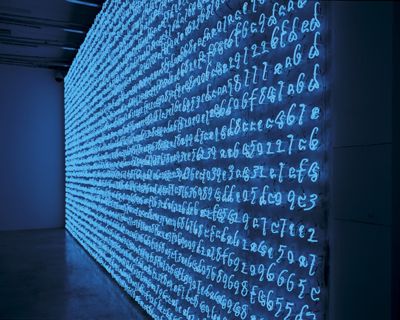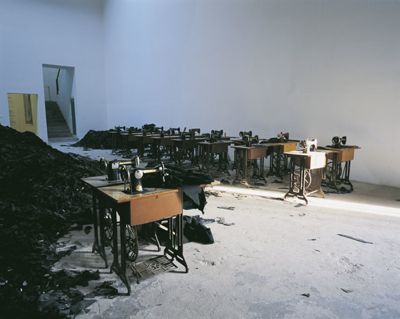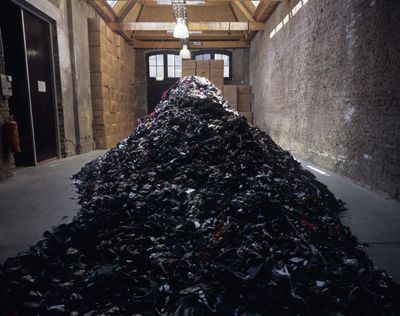This past DAI week were fortunate to have Ni Haifeng as our guest. Haifeng addressed the issue of collaboration between the artist and ‘participants’ with many of his past projects. Encircling discussions of ‘para-production’ and labour issues about the very nature of ‘Made in China’, Haifeng incorporates his identity, his mobility and technologies of production while addressing fordist as well as post-fordist consumerism to envisage alternative value systems.
‘Ni Haifeng’s practice stems from an interest in cultural systems of return, exchange, language and production. Through mediums of photography, video and installations, Ni explores the simultaneous creation and obliteration of meaning while drawing attention to the cyclical movements of people, products and goods that are often reflective of patterns of colonialism and globalization. Aims to subvert the status quo and counteract preconceived notions of art are, in Ni’s words, an effort towards reaching a ‘zero degree of meaning’. The concept of uselessness, seen in the desire to offset ‘the production of the useful’ that is central to the operative conditions of consumerism and the ‘dominant economic order’, plays a key role within Ni’s practice, lending his works a distinct political and social dimension.’
Pauline J. Yao
On Friday the 14th Haifeng gave a lecture/seminar entitled ‘Para-Production’, in his own words he describes the title and what he means: ‘I am particularly interested in manufacturing, which is, in a proper Marxist perspective, pivotal in the chain of social production. This specific type of production is now disappearing in more advanced countries and economic systems, and its social and economic significance diminishing. As a result, there occurred a global re-configuration of labor division and hence a new set of political economic relationships. China, among other developing countries, thus virtually becomes the collective working-class of global capitalism. These issues brought my attention to the inner mechanism of global production and consumption.’


With the addition of visual materials, some can be scene here and on his website, Haifeng further articulated his practice the past few years with projects in Delft and n Leiden. For one of his latest pieces, manufactured in China, he describes the process as follows: ‘This whole project is centered on the notion of labor, which is a knotting point in the ‘para-production’ of social relations. Here, I intend to place labor outside the economic law of equivalence, in other words, outside the gravitational field of capitalist system. The workers here are not commissioned laborers, but active makers, participants and contributors. The old question from Marx – ‘who is the real worker, the piano maker or the piano player’ still rings aloud; I want the laborers and the artist in this project to be equal makers of ‘Para-Products’. Also the work environment is not that of industrial production-line, but that of traditional individual-based type of production. The choice of old manual-sewing machines attests to this. They serve as witness to, at once, a particular process of para-production, and the absence or loss of individual-based ‘making and doing’ in our everyday life. It is interesting to see how weaving, sewing and tailoring, the oldest forms of production of basic human needs, have evolved into an exorbitant culture of high-consumerism. In this light, the project envisages an alternative value system and an alternative mode of social relations. That might sound a bit utopian.’

